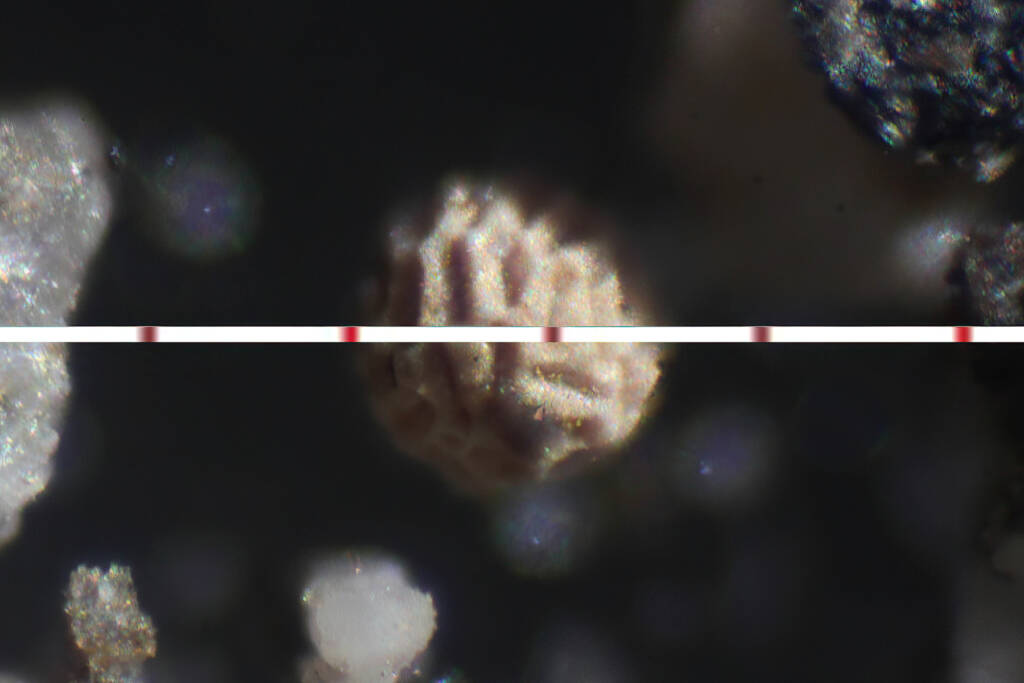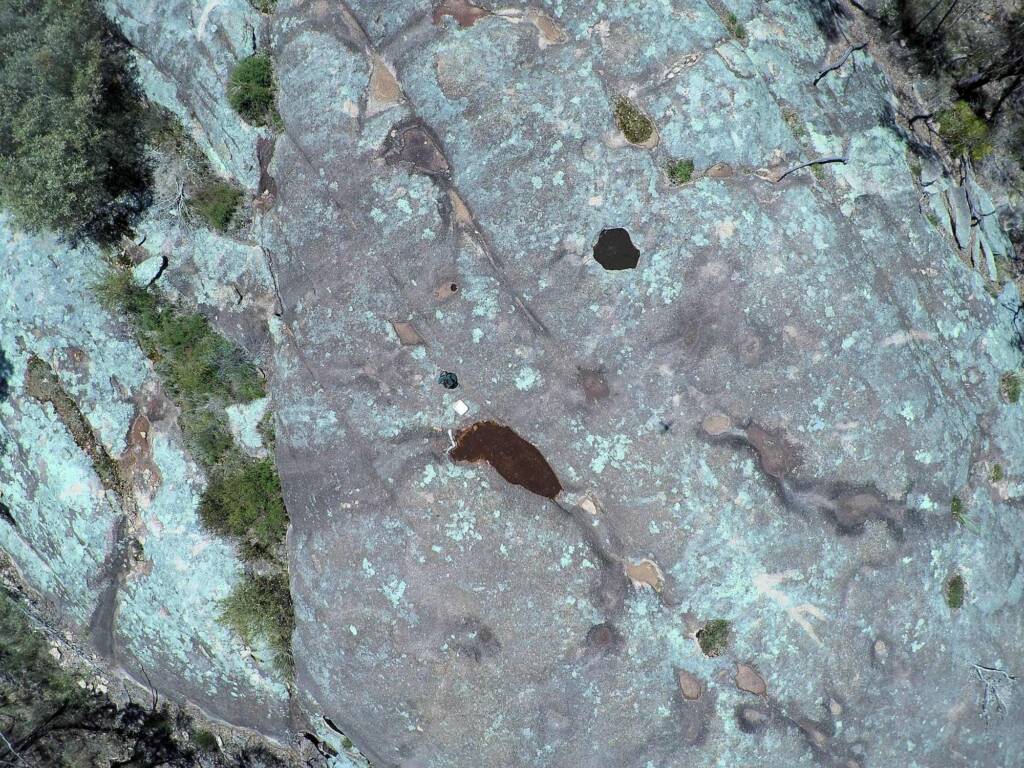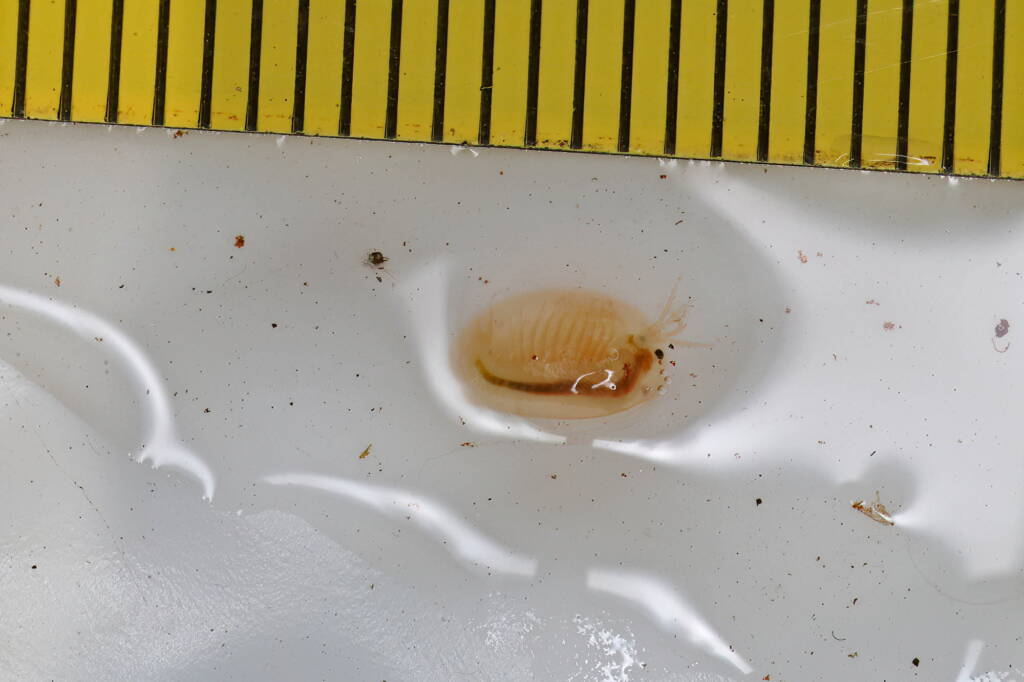Author Marc Newman ◦
Part 3 – Clam shrimps in the Gnammas
When I first met Dr Carol Booth, who at the time was editor of Wildlife Australia Magazine, she lived on a property at Greenlands, which is about 10 km west of Stanthorpe, which is now part of the Egernia Nature Reserve, named Egernia after the skink, E. cunninghami, a family of which lives and breeds near her house and frequently comes into the house looking for titbits.
Carol has these amazing Gnammas on her property near the entrance. It was here where we found our first Clam Shrimps.
The Clam Shrimp (Paralimnadia urukhai) is a species endemic to the Granite Belt showing a mate guarding pair — eggs in the female (right) and the male (left) the larger at 5 mm.

As part of my research, I increased the depth of a local gnamma with a concrete wall from around 40 mm to 100 mm, thus increasing the cycle time before evaporation dries the pool after rain.
The following photo is of one of their eggs I found in the dust of a dried out gnamma. Pretty small at ~0.15 mm and only visible under a microscope. The membrane texture is species specific.

In the following image is a baby Clam Shrimp (Paralimnadia urukhai) showing a measurement of just over 1 mm. We had good rain recently filling a previously dry gnamma. We measure 30 shrimp for statistical purposes and record growth and numbers weekly until the gnamma dries up. The count was 3,500 shrimp, a huge number in a pool of 7 square meters. The average size of the clam shrimp was 0.17 mm. The smallest clam shrimp found measured 0.7 mm which suggests a later hatching. A mature shrimp can be 4-8 mm long and an individual member can lay over 1,000 eggs.

A week later, there were no shrimps. The gnamma had 18 mm water depth, but must have dried up during the week before the rain. There wouldn’t have been time to mature and lay eggs, so it’s interesting to speculate on survival mechanisms. At least some eggs don’t hatch after rain. They appear to do better during winter when the evaporation rate is much lower.
On another occasion documenting the clam shrimp, I took the following aerial view of the gnamma.

On closer investigation of the gnamma (very hard to see in the water but their shadows give them away), I found my first juvenile Clam Shrimp, measuring 4.7 mm long. I caught it with a spoon and placed it in a white dish for the photo.

More information under Southern Downs Clam Shrimp (Paralimnadia urukhai)
Gnammas in the Granite Belt > Life in the Gnammas | Clam shrimps in the Gnammas
Check out more blogs and contribution by Marc Newman.
